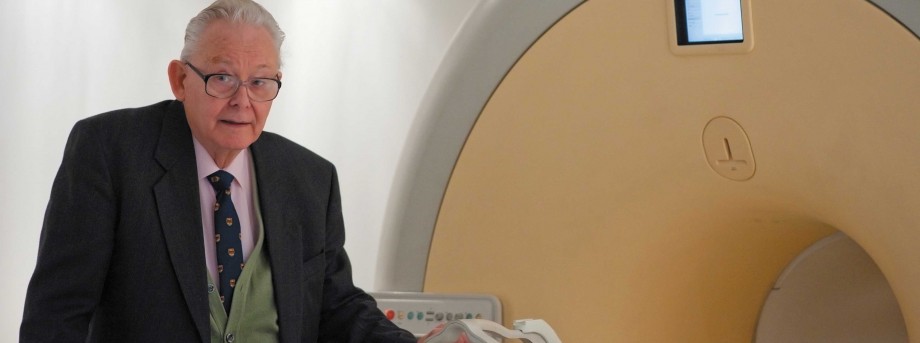At the age of 15 he was told he didn’t have the qualifications to become a scientist.
But Sir Peter Mansfield, Nobel Prize winner, Honorary Graduate and Emeritus Professor at the University is known throughout the world for his role in the development of Magnetic Resonance Imaging (MRI).
Now for the first time he has told the story of his pioneering research.
His autobiography, The Long Road to Stockholm, charts the journey of a young boy who grew up in Camberwell and went on to receive the highest accolade for scientific endeavour — an honour he shared with the late Professor Paul Lauterbur.
The book is a frank and very personal account of the trials and tribulations of pushing the boundaries of scientific research to the limit.
Sir Peter, who turns 80 this year, officially launched his autobiography at the University in February.
Sir Peter, who joined The University of Nottingham in 1964, took a close and hands-on approach to the development of the MRI scanner which has transformed diagnostic medicine and saved the lives of thousands of people. He continues his work at the Sir Peter Mansfield Magnetic Resonance Imaging Centre (SPMMRC) at the University to this day.
The SPMMRC is a world-leading centre for the continuing development of MRI, and is the UK centre for ultrahigh field MRI. The use of MRI to understand the developing brain is a key project within Impact: The Nottingham Campaign. Find out how you can help at: http://nott.ac.uk/impactmri
Tags: Magnetic Resonance Imaging (MRI), Nobel Prize, Sir Peter Mansfield, Sir Peter Mansfield Magnetic Resonance Imaging Centre (SPMMRC), The Long Road to Stockholm
Leave a Reply
Other Alumni news

Alumna Genevieve leads the team
Alumna Genevieve Jackson (Art History 2002) is the new Head of Alumni Relations.

